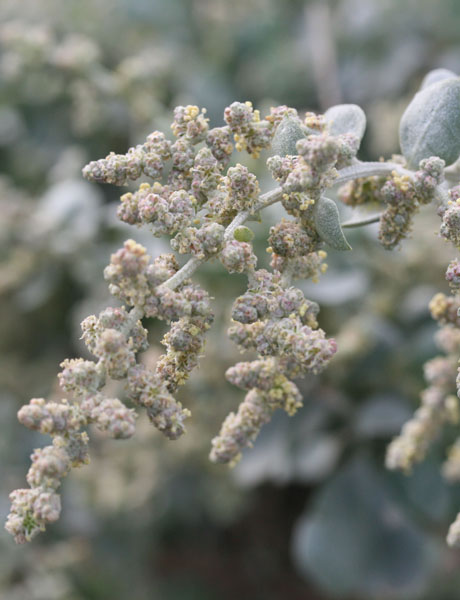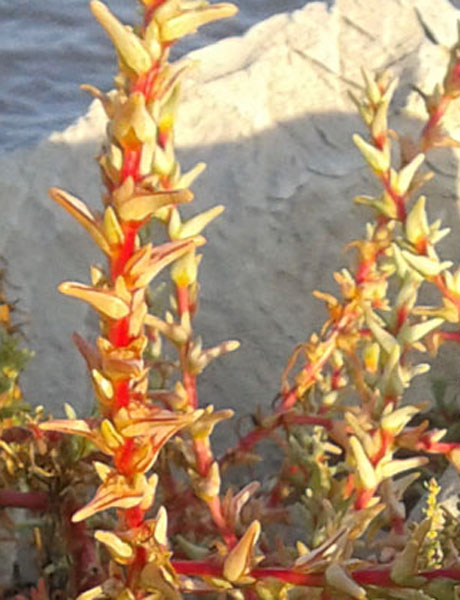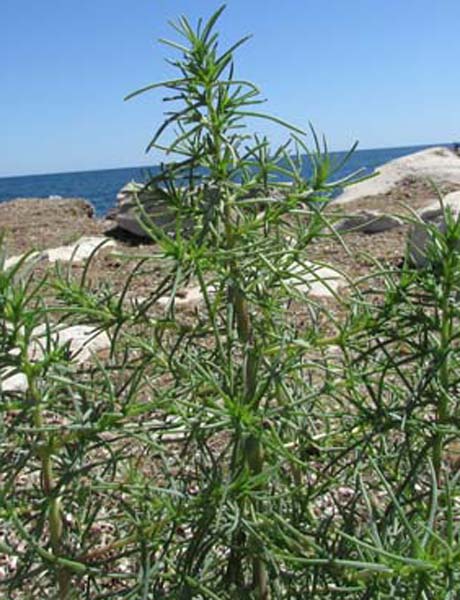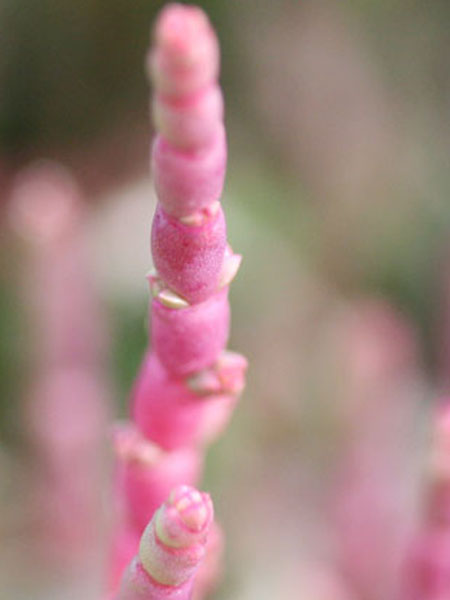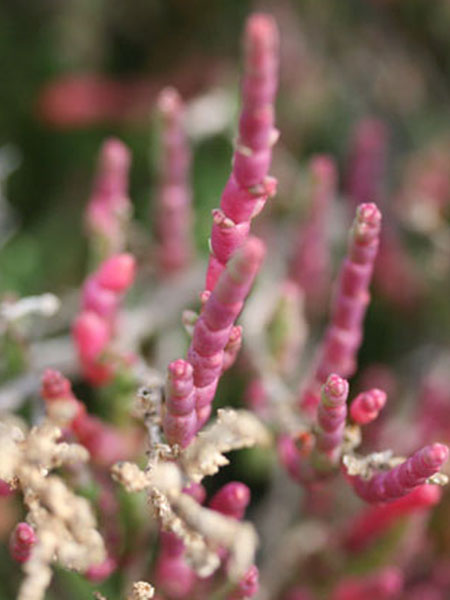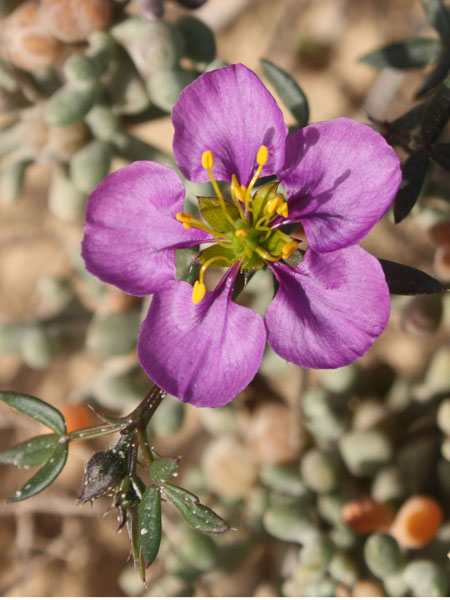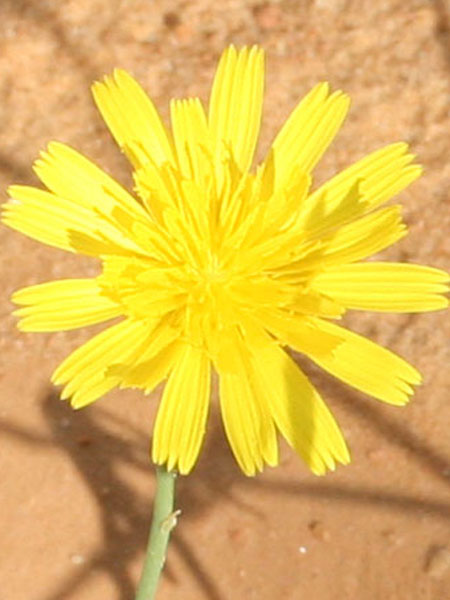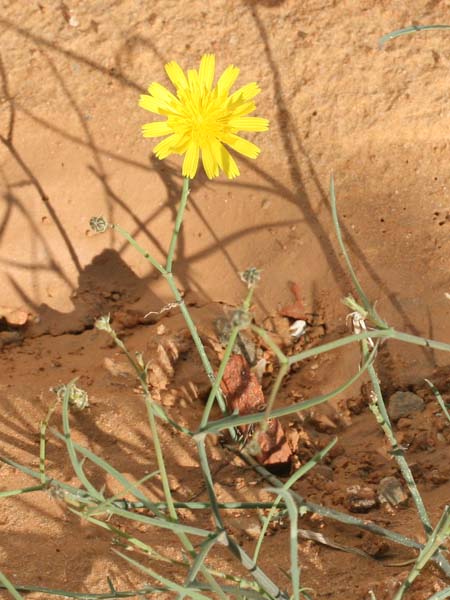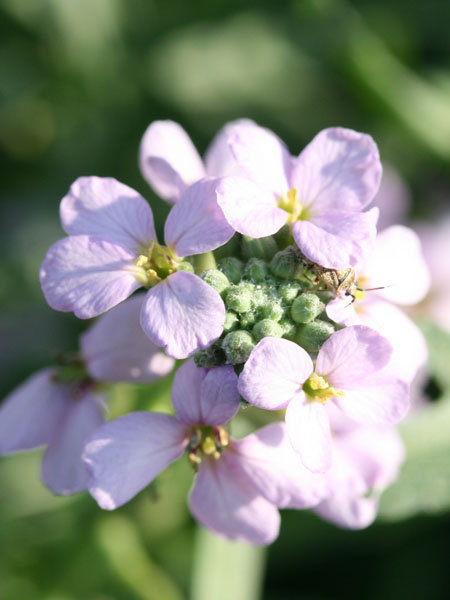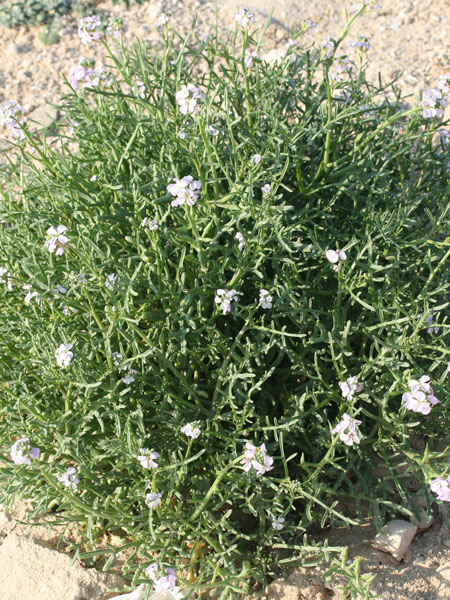Salsola kali
Kingdom : Plantae / النّباتات
Division : Spermaphyta / البذريات
Clade : Magnoliophyta or Angiospermae / مستورات البذور
Class : Eudicotyledoneae / ذات الفلقتين
Order : Caryophyllales / رتبة القرنفليات
Family : Amaranthaceae [Chenopodiaceae] /فصيلة السّرمقيات أوالرّمراميّة أو القطيفيّة
Genus : Salsola
species : kali
Chromosomes: 2n=36
Protologue
L., Sp. Pl., ed.1, 222 (1753)
Synonyms
Salsola tragus L., Cent. Pl. 2: 13 (1756). subsp. kali subsp. ruthenica (Iljin) So? in So? & Jav., Magyar N?v. Kéz. 768 (1951).
Salsola ruthenica Iljin in B.A. Keller et al., Sorn. Rast. SSSR 2: 137 (1934).
Common names
Tunisia Arabic English French Tamazight
تسمومة
الحرض الشّائك
حرض
Russian thistle
Prickly saltwort
Soude épineuse
Toxic
yes
Edible
no
Latex
no
Botanic description
Genus description
"Polygamous flowers or with 2 lateral bracts. Perigon usually 5 deep lobes, provided on the back with a spreading membranous wing simulating a corolla (reduced to a hull in S. soda), Etamines 5, protruding at flowering. Fruit depressed, locked in the perigone accrescent closed. Horizontal seed.
Species description
"Annual succulent plant 10 to 60 cm, rather bright green, hispidule or glabrous, fairly ramose, generally growing on the sands of the littoral.
Stems reddish more divaried or less erect. Leaves sessile alternate (except the lowest) thick, fleshy, linear in awl, terminally spiny, short, subtriangular florets, enlarged at the base. Flowers 1-3 grouped into axillary glomeruli. close together in spikes enough dense. Fruits perigone indurate fruit-bearing, with lobes on the back of a membranous wing truncated and eroded-toothed elegantly ridged, white or pinkish.
Botanic References
Pottier-Alapetite G. (1981). Flore de la Tunisie Angiospermes –Dicotylédones (Apétales- Dialypétale , Première partie). Imprimerie Officielle de la République Tunisienne (Eds), 63p. www.theplantlist.org
Biology
Life form Annuel Type form Therophyte Photosynthesis C4
Phenology
Blooming
JanuaryFebruaryMarchAprilMayJuneJulyAugustSeptemberOctoberNovemberDecember
Fruiting
JanuaryFebruaryMarchAprilMayJuneJulyAugustSeptemberOctoberNovemberDecember
Map Localization
Ecology
Adaptation She likes a strong light to develop and tolerates its direct exposure to sea spray. It provides a useful shelter for some species of small mammals and birds. Salt bladder yes Invasive no
Geographical distribution
Localization Biocimatic stage Annuel pluviometry (mm) GPS Djerba Higher arid 209 33°52'7.23"N / 10°57'50.67"E Monastir (Bekalta, Juillet 2015) Inferior semi-arid 331 35°36'34.03"N / 11° 2'40.42"E Monastir (Ancien Port, Juillet 2016) Inferior semi-arid 331 35°45'37.86"N / 10°49'53.86"E Monastir (Falaise, Déc.2013) Inferior semi-arid 331 35°46'44.32"N / 10°47'45.11"E Sousse ( Hergla, Juillet.2016) Inferior semi-arid 331 36° 2'10.01"N /10°29'52.21"E Cap Bon ( Menzel Temim, Fév.2016) Superior semi-arid 444 36°46'1.21"N / 11° 0'19.64"E
General uses
Plants of the genus Salsola were used to make soda. The ashes obtained after combustion of the plant were combined with lime, this way "caustic soda" was prepared. Some farm animals goats, sheep and especially dromedaries adapted to semi-desert conditions will devour the thorns when fodder is scarce.
Medicinal uses
"The plant is traditionally used for its medicinal properties as a hypotensive and antidiuretic plant. In this context, this hypotensive role has been attributed two alkaloids molecules called salsolidine and Nferuloyl- putrecin is obtained from this plant. The pollen grains of Salsola kali are considered allergens for some people which can cause symptoms of respiratory allergy; this was therefore the subject of research on an appropriate vaccine.
NOTE : This website is not that of herbal medicine and assumes no responsibility for the negative effects of the use of plants. Seek advice from a professional before using a medicinal plant.
Systems / Organs / Effects
Digestive System Reproductive System Circulatory System Skin
Dispersion mode
Germination
Duration
Image
Description of the seeds
Form External structure Ornamentation Type of seed Average length of 10 seeds ± (mm) Average width of 10 seeds ± (mm) Average thickness of 10 seeds ± (mm) Average mass of 100 seeds (g)
Test results
TPC DPPH ABTS+ FRAP Year mg GAE g-1 MS CI50 g ml-1 CI50 g ml-1 CE50 g ml-1 22,41± 0,19 16,45± 0,72 28,63± 0,31 196,74± 1,88 2016 Total Phenols content(TPC), Anti-radical potentialities against (DPPH, ABTS), Ferric reducing antioxidant power(FRAP)
Molecules : ADN / Proteins
Chromosomes : 36 Uniprot NCBI
Tunisian references
Chaieb M et Boukhris M. (1998). Flore succincte et illustrée des zones arides et sahariennes de Tunisie. Association pour la protection de la nature et de l’environnement, Sfax. 191 p.

























